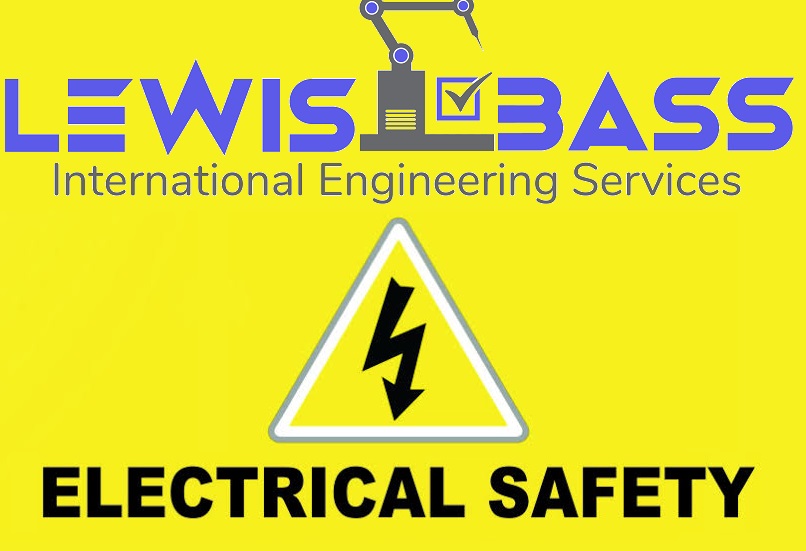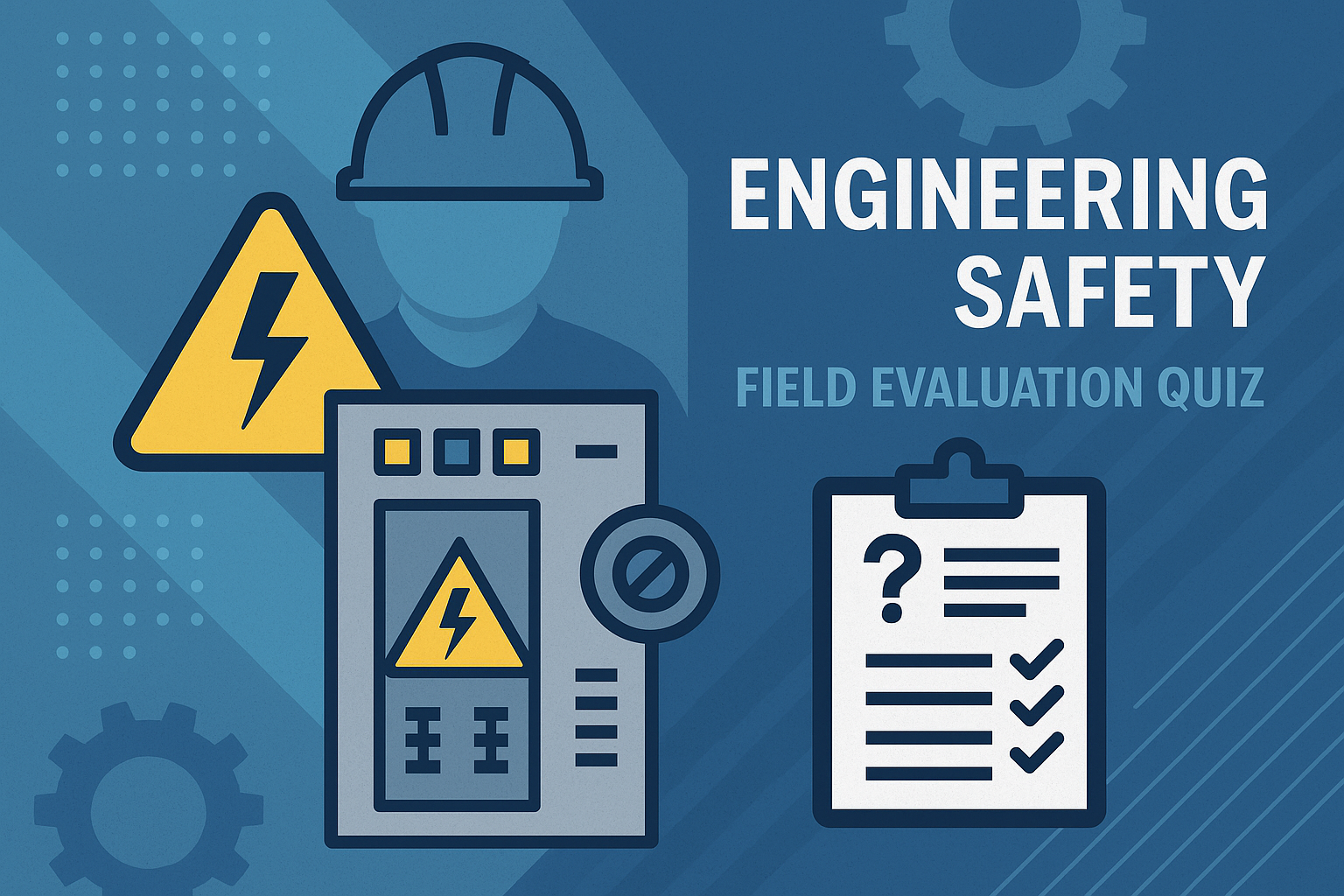electrical safety, safety
|
February 1, 2021 |
News, Today I Learned
LBIES’s Electrical Safety Awareness Blog Series Part 3
And now our exciting conclusion to our 3 part series on Electrical Safety Awareness!
This is the final blog in our three part series and follows the end of part 2’s “Recognize the Hazards” section.
Ground-Fault Circuit Interrupter
- Always use a GFCI receptacle or circuit for cord connected tools and equipment used outdoors or near water.
- This device protects you from electrocution.
- The GFCI detects a difference in current between the black and white circuit wires (this could happen when electrical equipment is not working correctly, causing current “leakage” – known as a ground fault).
- Perform the test function on the GFCI to determine if it is functioning properly by pushing the button to verify it shuts off.
- Repeated resetting is not allowed. Contact your local E&I to troubleshoot if the GFCI continues to trip.
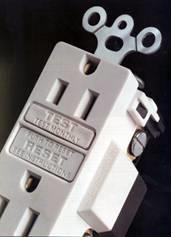
Examples of Prohibited Uses of Flexible Cords
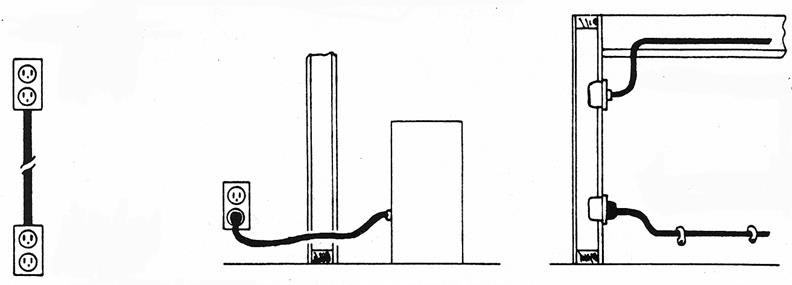
Safe Practices: Cord Control
- Do not fasten electrical cords to surfaces with staples, nails, wire, or any other method that might damage the cord.
- Extension cords:
- Place them in appropriate locations.
- Understand they are for temporary use only.
- Tool cords:
- Keep track of them, to assure they do not become damaged.
- Do not plug or unplug electrical cords with wet hands or while standing in water.
- Do not use portable electrical equipment or extension cords in wet or damp locations without a ground fault circuit interrupter (GFCI) ahead of the plug connection.
- GFCIs are also required for temporary power applications in wet or damp locations, including extension cords.
- Remove loads from an appliance or extension cord before unplugging it.
- If a plug won’t stay placed snugly or fits loosely in a receptacle, don’t use it; call a local E&I to replace it.
Safe Practices: Resetting Breakers
- When circuit breakers and fuses trip, don’t reset or replace them!
- Only qualified and authorized personnel are allowed to reset breakers and replace fuses.
- Contact qualified personnel to determine the cause of trips.

Safe Practices: Conductive Apparel
- Don’t wear loose conductive apparel, (such as rings, watch bands, bracelets, necklaces, etc.) when plugging in electrical cords.
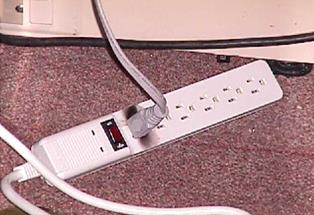
Safe Practices: Wall Penetrations
- When penetrating walls to hang pictures, bulletin boards, signs, understand and follow site requirements to ensure that concealed electrical wiring, conduit or piping will not be contacted.
- A non-obtrusive survey (e.g., Ground Penetrating Radar, proximity detection device) may be required, along with a review of applicable drawings, to ensure that the electrical system is not penetrated or contacted.
Safe Practices: Equipment Applications
- Consumer electrical equipment or appliances should be tested and labeled by a recognized testing laboratory. Look for the UL, CSA, ETL, or MET label on the equipment.
- Always read and follow the manufacturer’s instructions carefully. Be sure that the equipment or tool is rated for the environmental (wet, damp, etc.)
- Plug portable space heaters directly into outlet: do not use an extension cord. Use a circuit with as little else on it as possible since space heaters take a lot of power.


Safe Practices: Qualifications
- Do not remove/replace receptacle covers, switch plates, or covers of electrical equipment that may contain energized conductors without electrical qualifications and authorization.
- Only qualified electrical workers may perform activities such as electrical probing, measuring and testing electrical energized components (such as performing an “absence of voltage” test).
Electrical Emergencies
- Do you know what dangers could be encountered?
- Attempts to rescue an accident victim may pose as great a hazard for the rescuer as it does for the victim.
- A victim of an electrical accident is often unable to move or release the electrical conductor, because of muscle clamping.
- Caution should be a primary consideration during any electrical accident or emergency.
- Do you know the proper actions to take if you see someone receiving a shock or locked onto an energized electrical line?
- Approaching the accident:
- Never rush into an accident situation—assess your own safety first.
- Call 9-1-1 as soon as possible.
- Unplug portable electrical equipment to remove power.
- Open a disconnecting device or circuit breaker to de-energize fixed electrical equipment.
- Use a dry wood broom, leather belt, plastic rope, or something similar that is non-conductive (such as wood or a plastic cane with a hook on the end) to free the person from the energy source.
Electrical Emergencies: Downed Power Lines
- Do you know the proper actions to take?
- Approaching the accident:
- Move away from the downed power line.
- Shuffle away with small steps keeping your feet together.
- If you see someone in direct contact with the line, do not touch the person.
- Do not attempt to move a downed power line.
- Get the aid of trained electrical personnel if possible.
- If you are in your car and it is in contact with the downed line, stay in the car. Honk your horn for help and tell others to stay away from your vehicle.
What Now?
- Inspect your work areas.
- Existing unsafe conditions:
- Bare Wires.
- Open enclosures containing exposed wires.
- Loose or missing covers or fasteners.
- Existing unsafe conditions:
- Use good electrical safe practices:
- No daisy-chaining.
- No overloading outlets.
- Pull on plug, not the cord.
- What do I do if I identify a hazardous condition?
- When unsafe electrical conditions are found, correct them if possible, or take steps to warn other employees.
- Report unsafe electrical conditions verbally and/or in writing to your supervisor(s) so corrective actions can be taken immediately.
- Barricade the area if an immediate hazard exists.
- Notify your supervisor(s) for correction and documentation.
For More Information Check Out These Sources
- Contacts:
- Your site Electrical Safety Officer, or
- Your Safety Engineer
- Websites:
- See Electrical Safety Foundation International.
- OSHA’s Electrical Safety page.
- The CDC’s Electrical Safety page.
